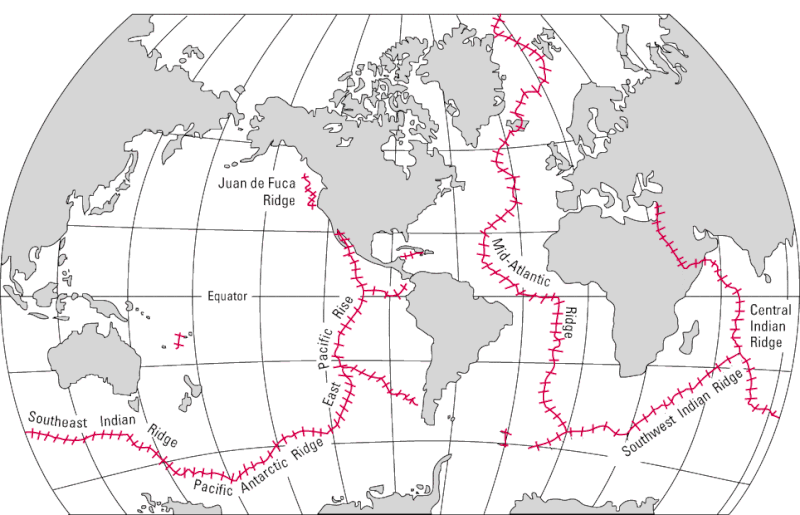Every ocean basin has a mid-ocean ridge, which creates a long mountain range beneath the ocean. Together they form the global mid-oceanic ridge system that features the longest mountain range in the world. The longest continuous mountain range is 65,000 km (40,000 mi). This underwater mountain range is several times longer than the longest continental mountain range—the Andes.
Oceanographers state that less than 20% of the oceans have been mapped. Mid-ocean ridges occur along divergent plate boundaries, where new ocean floor is created as the Earth’s tectonic plates spread apart. As the plates separate, molten rock rises to the seafloor, producing enormous volcanic eruptions of basalt. Some examples include- the Mid-Indian Ocean Ridge, Carlsberg Ridge, Pacific-Antarctic Ridge, and the East Pacific Rise.
Two of the most well-known mid-ocean ridges are the Mid-Atlantic Ridge and the East Pacific Rise. As you might guess, most of the Mid-Atlantic Ridge is in the Atlantic, and most of the East Pacific Rise is in the Pacific.
A mid-ocean ridge (MOR) is a seafloor mountain system formed by plate tectonics. It typically has a depth of about 2,600 meters (8,500 ft) and rises about 2,000 meters (6,600 ft) above the deepest portion of an ocean basin. This feature is where seafloor spreading takes place along a divergent plate boundary.
Mid-ocean ridges are geologically important because they occur along the kind of plate boundary where new ocean floor is created as the plates spread apart. Thus the mid-ocean ridge is also known as a “spreading center” or a “divergent plate boundary.” The plates spread apart at rates of 1 cm to 20 cm per year.

